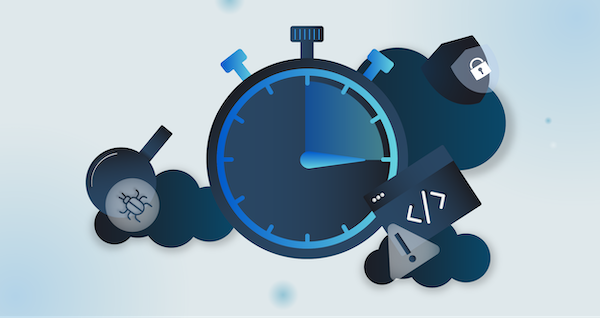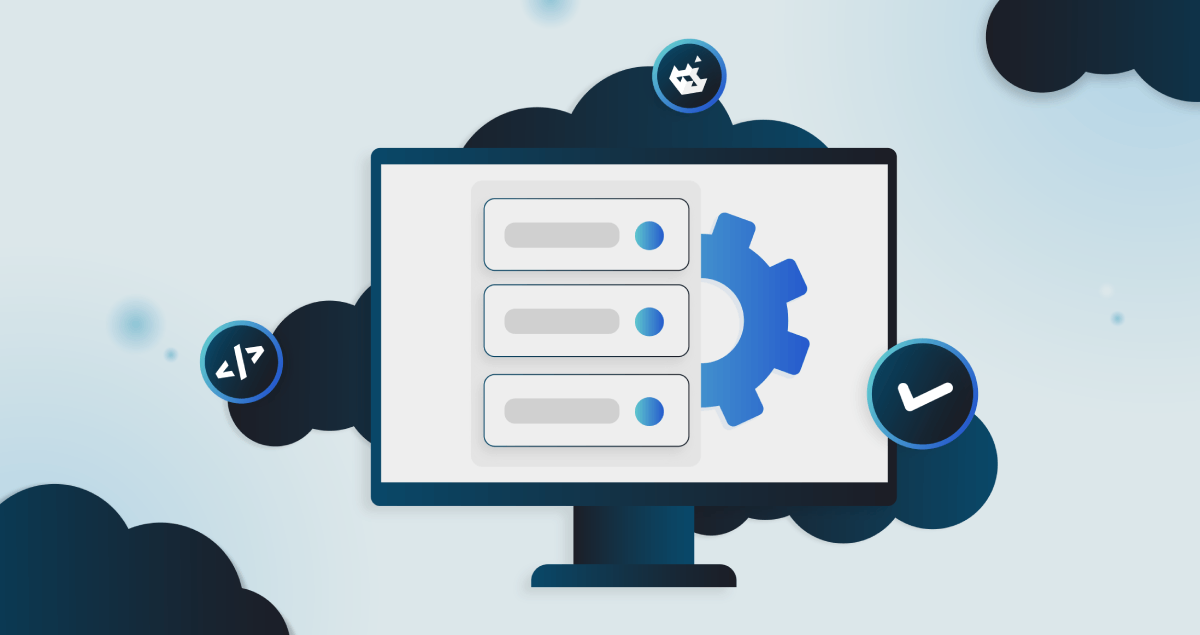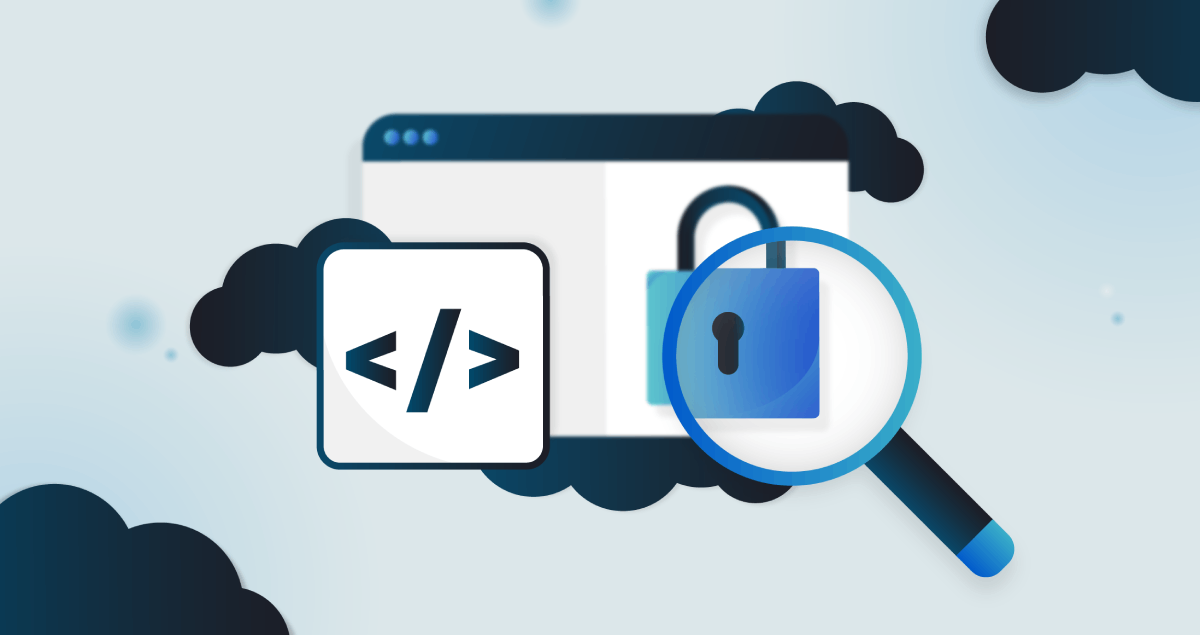Nowadays, Google Cloud Platform (GCP) is the preferred choice for many organizations scaling their cloud infrastructure. However, with that popularity comes the need for stronger security and compliance practices. One way of achieving this is with SecureFlag’s automated threat modeling tool, ThreatCanvas.
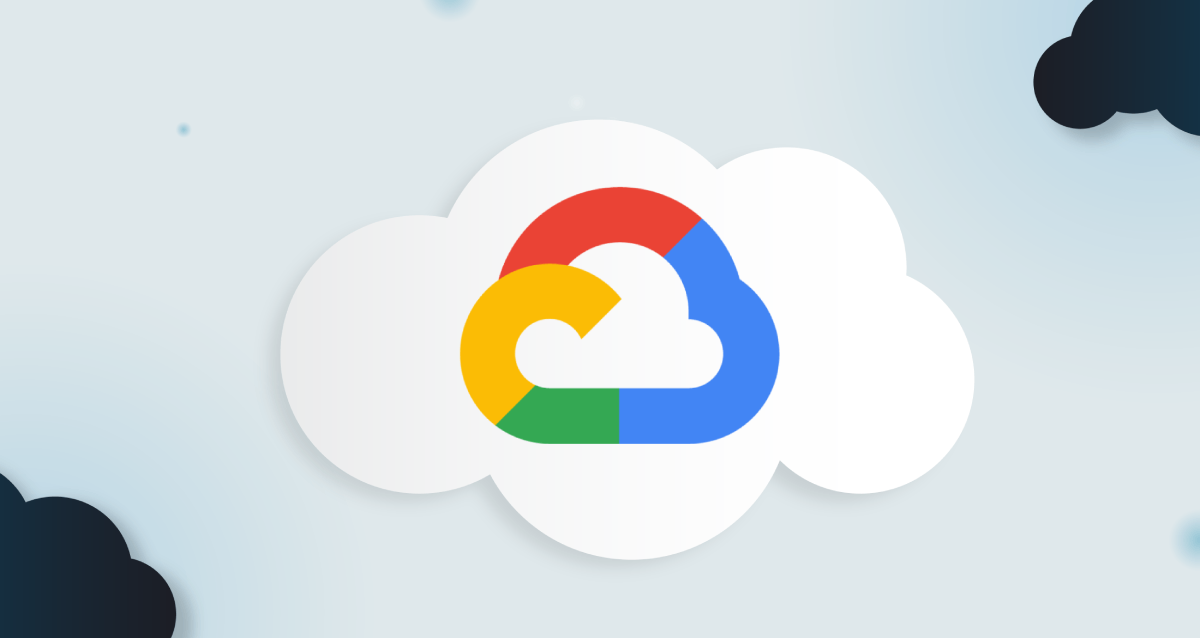
That’s why we’re really pleased to introduce our new GCP Risk Template for ThreatCanvas. This template is designed not only to help teams identify and address security risks but also to simplify compliance requirements for GCP environments.
Why GCP Security is So Important
GCP is one of the most powerful cloud platforms out there, but like any cloud environment, it comes with security problems. Misconfigured Identity and Access Management (IAM) roles, exposed storage buckets, and insecure APIs are just a few of the issues that can leave your cloud infrastructure wide open to attacks. Here are some common problems where ThreatCanvas can help to identify threats:
IAM Roles
If your IAM settings aren’t configured properly, you could give users too many permissions, letting them access resources they shouldn’t. Having extra permissions can lead to unauthorized changes or data leaks. It’s best to stick to the principle of least privilege—only give people the permissions they need to do their job.
Exposed Cloud Storage Buckets
One of the biggest mistakes you can make is leaving storage buckets open to the public. This can expose sensitive data, like customer information or business documents, to anyone. The fix? Make sure your storage buckets are correctly configured so only the right people have access.
Insecure APIs and Services
APIs are used in many applications, and when they’re not secured properly, they’re an easy target for attackers. Open endpoints or weak authentication methods could keep the door open to data breaches. Make sure your APIs are locked down with strong access controls and encryption.
The Shared Responsibility Model
While GCP is certified for standards like GDPR, HIPAA, ISO 27001, and FedRAMP, it’s important to understand that cloud security and compliance are shared responsibilities. GCP takes care of securing its own infrastructure, but it’s the responsibility of businesses to ensure that their specific resources, applications, and configurations are set up correctly to meet the necessary compliance standards. This means organizations must actively manage and secure their own cloud environments, including IAM settings, storage permissions, and data protection practices, to stay compliant with industry regulations.
ThreatCanvas helps make sure your GCP applications and infrastructure meet security and compliance standards without all the guesswork.
The Benefits of Automated Threat Modeling
We know that: manual threat modeling can be time-consuming and a hassle. Not only that, but it needs expertise, and there are still likely to be human errors. Tools like ThreatCanvas take care of the complex stuff, letting you focus on what’s important, like securing your GCP environment.
Here are just a few reasons why automated threat modeling is worth it:
Saves Time
Why spend days mapping out potential threats and risks manually when a tool can do it quickly? Automation helps speed up the process and lets teams address vulnerabilities faster and more efficiently.
Consistency and Accuracy
Human error is inevitable, but automated tools keep everything in check. ThreatCanvas makes sure that risks are identified and assessed so that no details are overlooked.
Built-in Expertise
Don’t have a full team of security experts on hand? No problem. Automated tools are designed to embed best practices and industry standards right into the process. There doesn’t have to be so much reliance on security teams.
Easier Collaboration
Threat modeling often involves multiple teams, including developers, security, and operations. Automated tools make it easy to share findings, generate reports, and keep everyone in the loop.
Scalable Solutions
As your cloud environment grows, so do its risks. Automation scales effortlessly to cover new projects, applications, and configurations, ensuring you’re always protected no matter how big your infrastructure gets.
With ThreatCanvas, teams can streamline the entire threat modeling process by using IaC templates and architectural diagrams or simply describing the application and then sharing the resulting models with other teams.
What’s the GCP Risk Template?
ThreatCanvas’ GCP Risk Template has been created to help you identify, assess, and mitigate common risks, ensuring that your cloud environment remains secure and compliant. It helps catch potential threats, matches them to industry standards and compliance needs, and gives you actionable steps to address them.
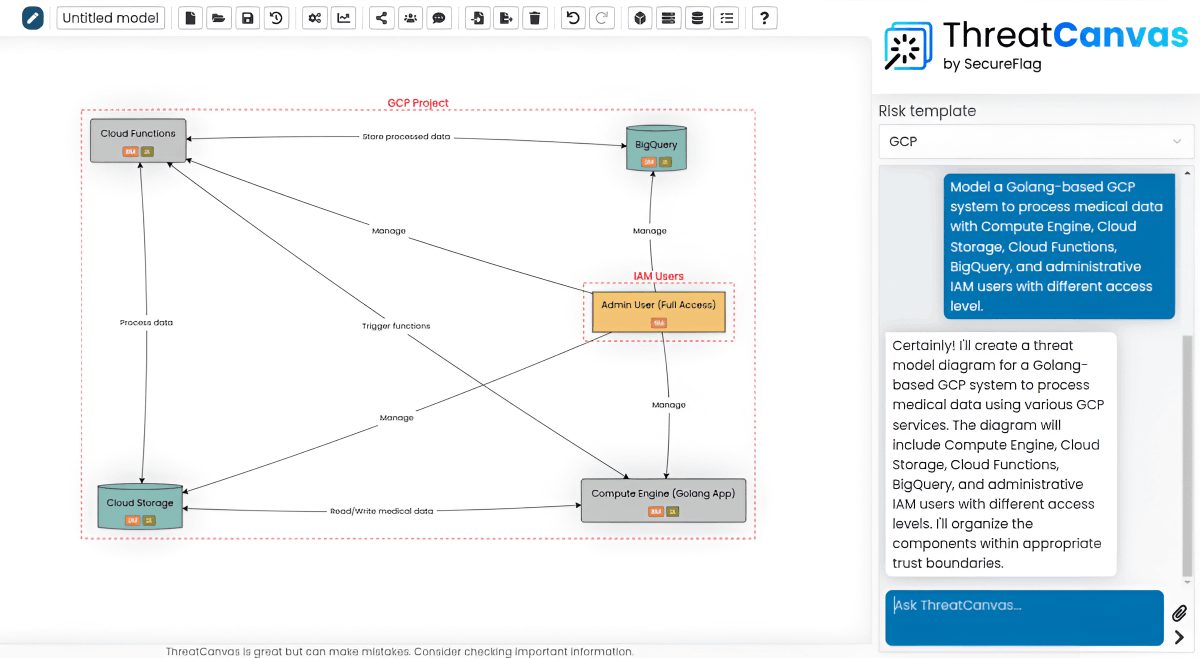
How ThreatCanvas Makes Risk Management Easier
The GCP Risk Template from ThreatCanvas is way more than just a checklist; it lets you:
-
Find security and compliance gaps specific to your GCP setup.
-
Align your security practices with standards like GDPR and FedRAMP.
-
Get straightforward advice on how to fix vulnerabilities and improve your security.
Get Started with ThreatCanvas Today
Ready to make securing your GCP environment easier? Whether you’re building new applications or improving the ones you’ve got, ThreatCanvas provides the insights and tools you need to handle security and compliance risks more quickly.
Get in touch today to learn how ThreatCanvas can simplify your GCP risk management!
